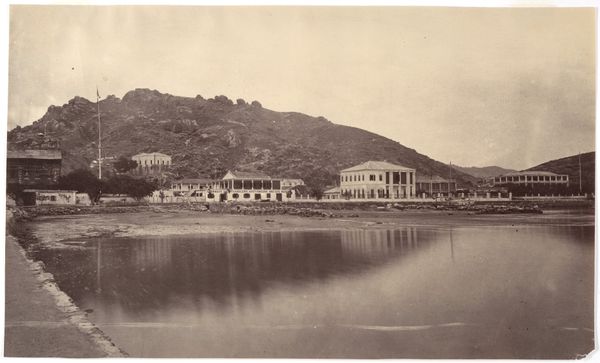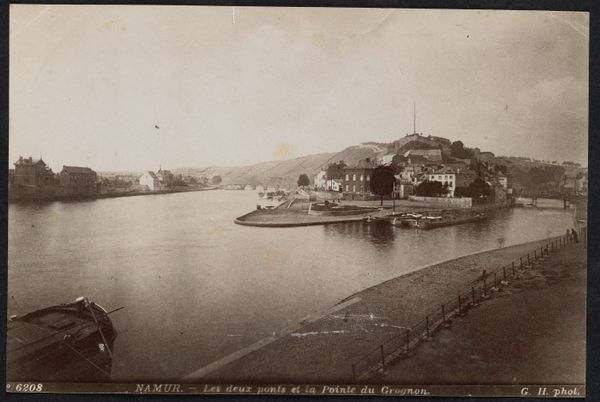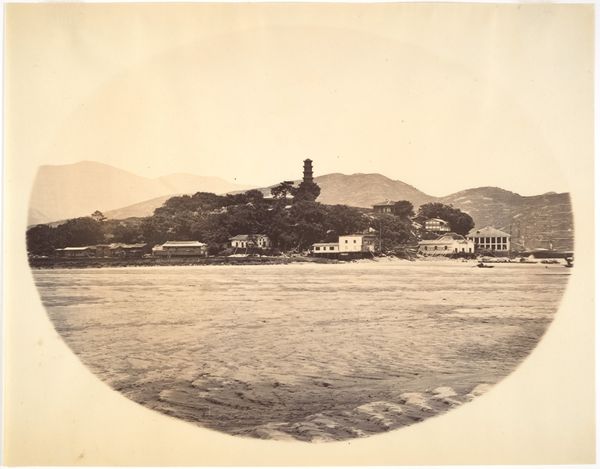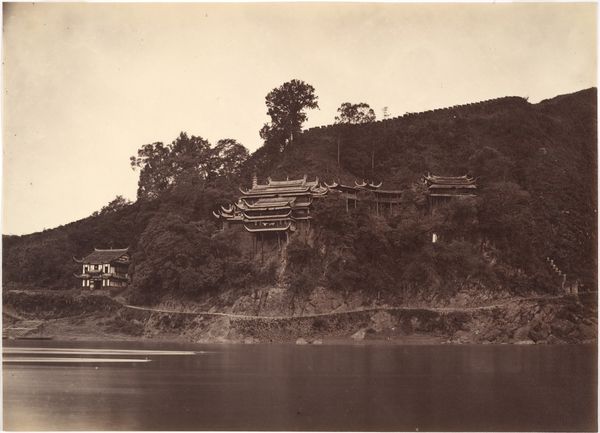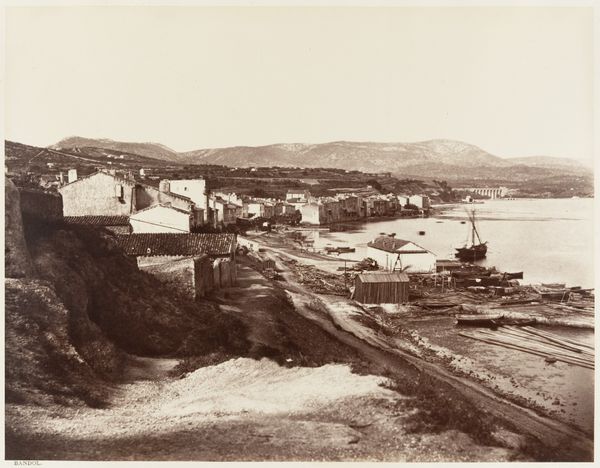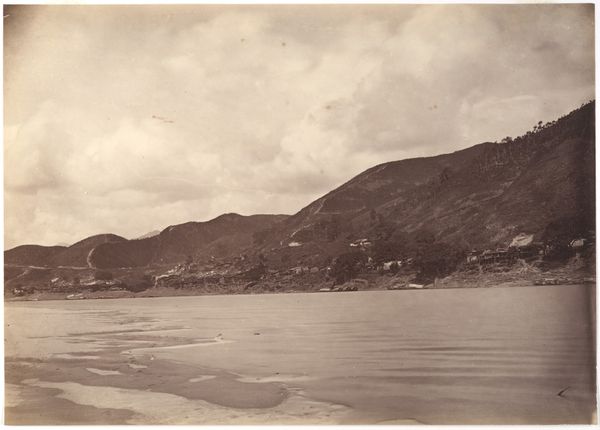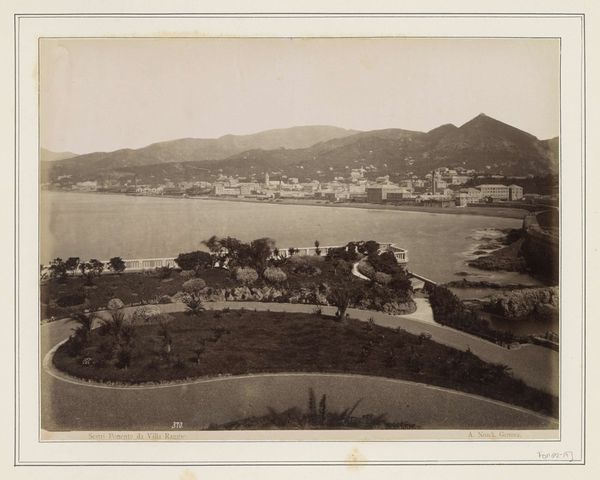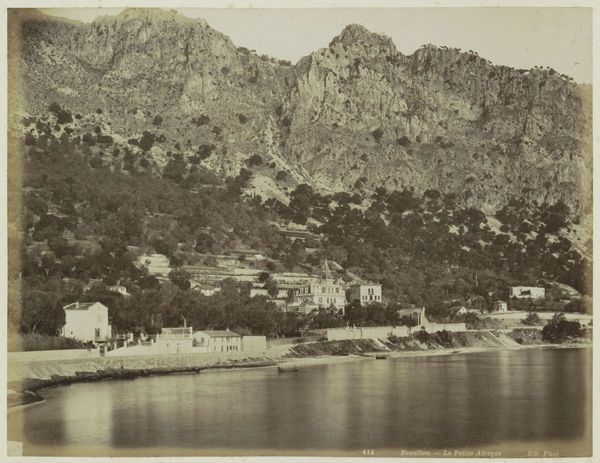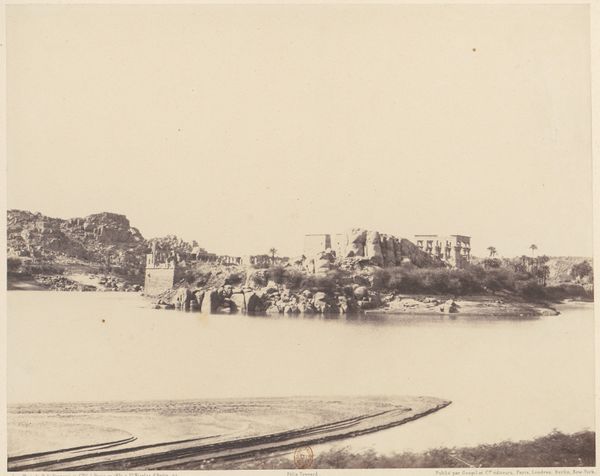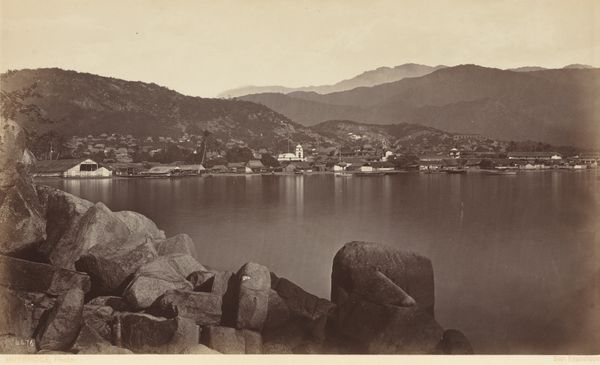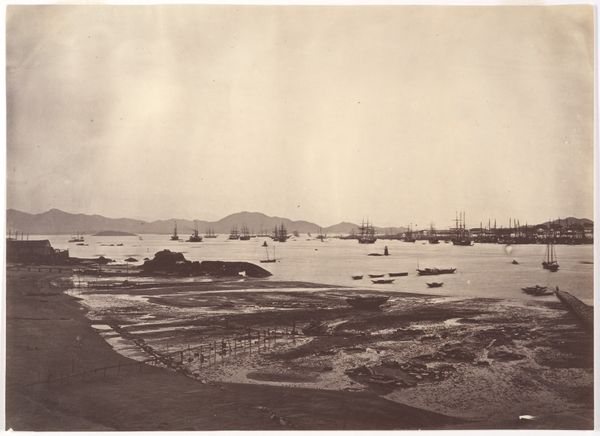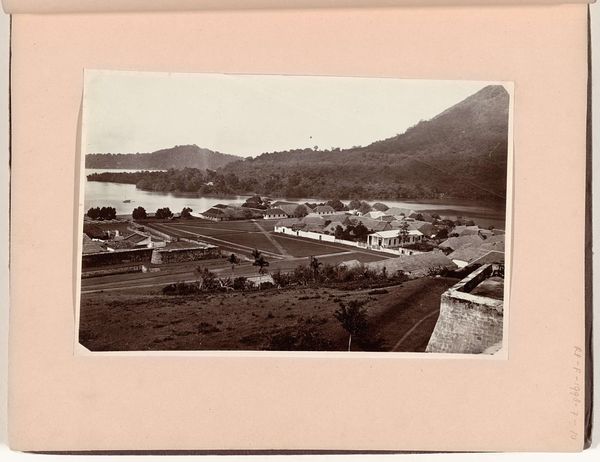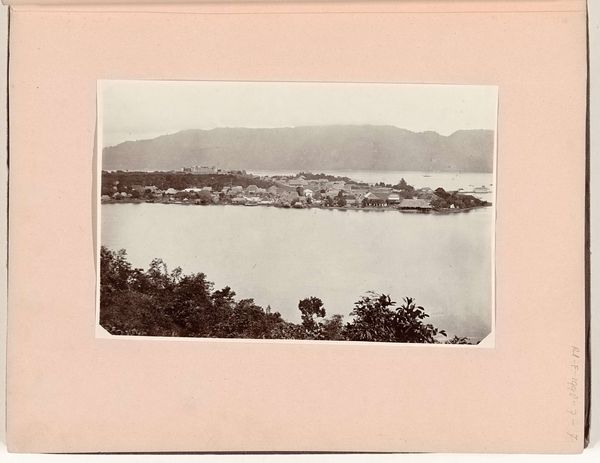
photography, albumen-print
#
landscape
#
outdoor photography
#
photography
#
orientalism
#
monochrome photography
#
albumen-print
#
monochrome
Dimensions: Image: 6 1/4 × 10 9/16 in. (15.8 × 26.9 cm)
Copyright: Public Domain
Curator: We're looking at John Thomson’s 1869 albumen print, "View on Rak-Chui opposite Swatow," currently residing at the Metropolitan Museum of Art. It captures a serene scene, almost like a hazy dream. Editor: That haze is interesting! I feel a palpable stillness, an emptiness that invites contemplation. There's also a strange, almost palpable dampness in the air, isn't there? Like the mist is just settling. Curator: Thomson's work here exemplifies landscape photography during a period of increased European involvement in China, specifically in treaty ports such as Swatow. It served as a powerful medium for both documentation and the perpetuation of Orientalist perspectives. We might ask what kinds of visual stories albumen prints like this were selling and to whom. Editor: Orientalist perspectives indeed. I'm curious about that grand building nestled within the rocks. There’s a touch of human imposition there, contrasted by nature's imposing, raw form, this craggy scene softened only by distance. Is it a political statement, a commentary on colonial influence or just an attempt at beautiful scenery? Curator: I’d say, thinking about Thomson’s practice, we can definitely see it as commentary. He was interested in contrasting and comparing these different worlds through photographs that were very carefully posed and composed to show the difference. The production of these prints – the albumen itself was meticulously crafted – contributed to their preciousness as artifacts for the colonizer's collection. Editor: Makes one think about labor involved in extracting raw materials too, and just how much unseen work enabled one single "pretty picture." When I look at the water's glassy stillness and those stark, angular rock formations it prompts these uncomfortable feelings about history and who dictates what "beauty" even means! It feels a bit conflicted. Curator: Right, exactly that contradiction is part of the photographic project here. It is at once documenting the site but also imprinting on it. And there's the other perspective, what about people of this region, and what work were they doing that's literally the foundation for that pretty building and grand structure to appear in an image like this. Editor: A landscape concealing far more than it reveals, then. Makes me see those monochrome tones as various layers to peel away at. Thank you for guiding me through all this. Curator: Likewise, you've shown me a lot to contemplate as well.
Comments
No comments
Be the first to comment and join the conversation on the ultimate creative platform.
